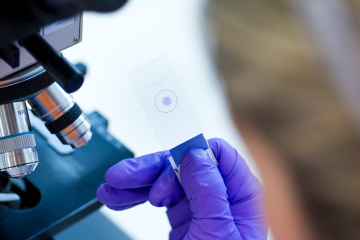Project grant
Generation of vascularised immunocompetent retinal assembloids from human pluripotent stem cells

At a glance
In progress
Award date
December 2024 - November 2026
Grant amount
£469,634
Principal investigator
Professor Majlinda Lako
Co-investigator(s)
- Professor Evelyne Sernagor
- Professor Lyle Armstrong
- Dr Rozaliya Tsikandelova
- Dr Robert Zweigerdt
- Dr Gerrit Hilgen
- Professor Reinhold Medina
Institute
Newcastle University
R
- Replacement
